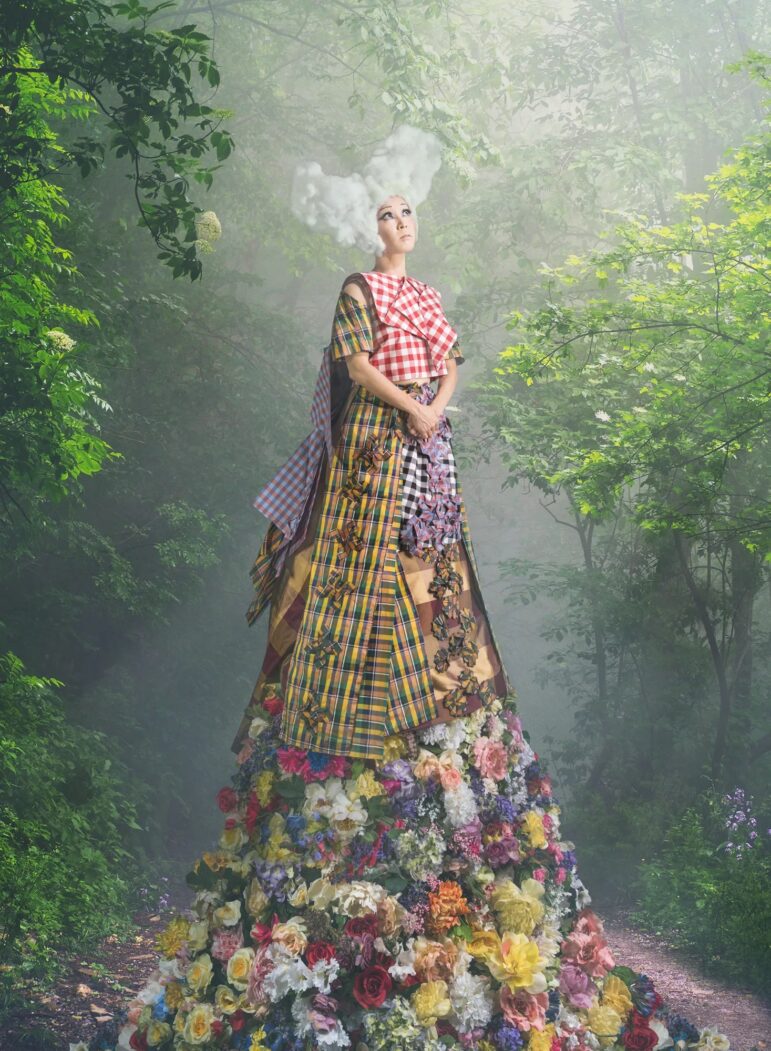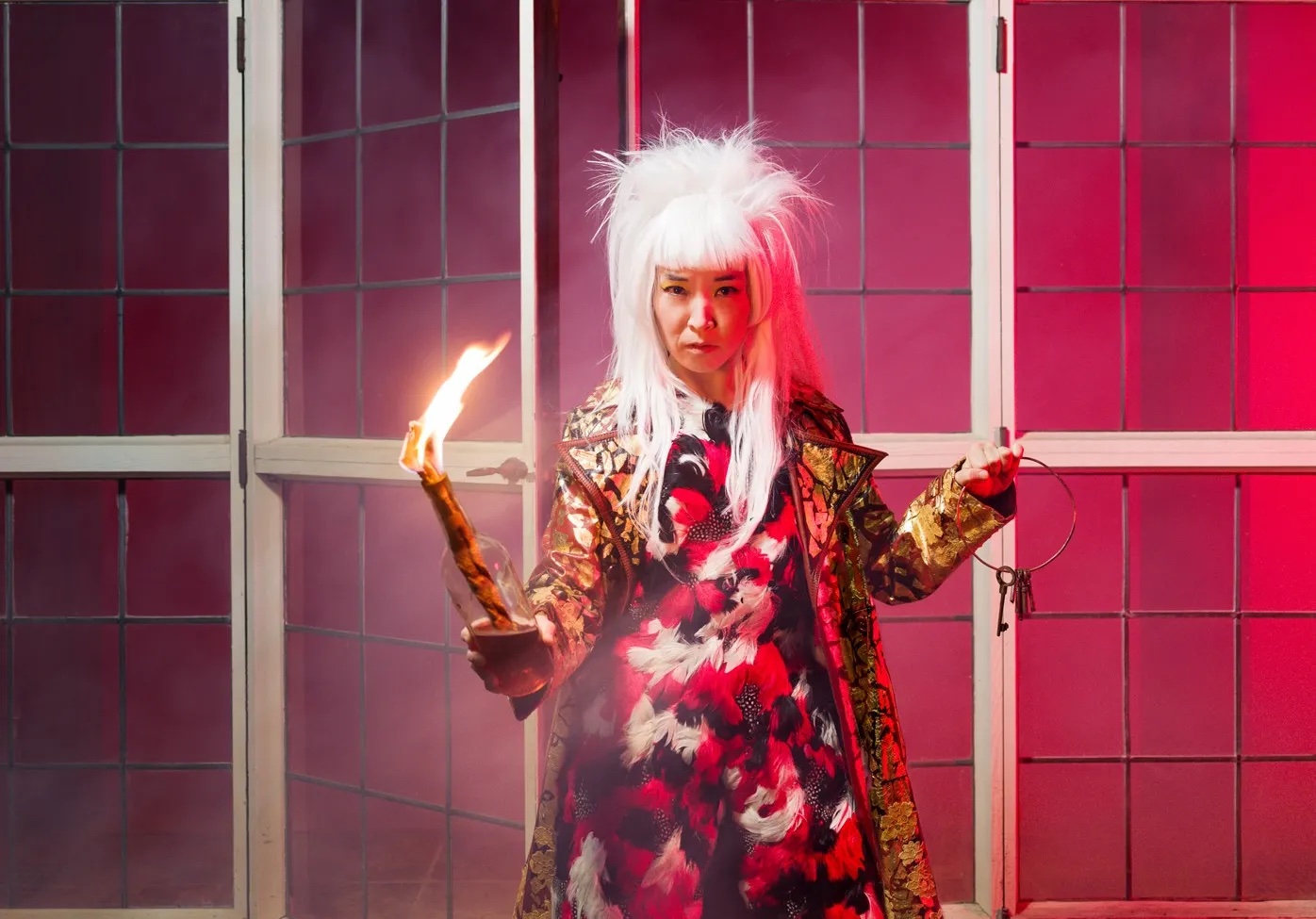On a darkened stage, a woman stoops, flapping her arms like a bird ready to soar. Instead, she doubles over in agony.
She says, “I walk the whole way. Mother visits my mind again.”
The scene, seemingly an emotional introduction to a young girl’s fantasy, is from “Skeleton Flower,” a production presented by Degenerate Art Ensemble onstage at ODC Theater on March 15-17.
In the piece, which marries horror and beauty, the dance-theater troupe’s founder Haruko Crow Nishimura draws on the legacy of her female ancestors and accumulated indignities to which women are subject, from humiliation to violence.
The Seattle-based company, which has appeared throughout the U.S. and Europe, describes its work as “inspired by punk, comics, cinema, nightmares and fairy tales driven by live music and visceral movement theater and dance.”
Nishimura’s dance portrays her world through three fairy tales: “The Wild Swans,” “The Red Shoes” and “Fitcher’s Bird.”
The style is based on Japanese butoh, a dance-theater from grounded in gravity, which emphasizes the body. It was developed in the 1960s as a rebellion against the rigid verticality of Western classical dance and traditional Japanese noh, according to Joshua Kohl, Degenerate Art Ensemble composer and producer.
In “Skeleton Flower,” after tortured encounters with monsters who represent Nishimura’s family drama and conflict, there is a hopeful ending.

She transforms and transitions into a lovely flower, a plant that grows in Asian woodlands, called diphylleia grayi. The cheery white skeleton flower turns transparent when drenched by rain and then it glistens.
“To know the true darkness and confront the real demons inside of you, then you come out of that experience, and you fully understand beauty, magnificence and joy,” Nishimura says. “That is my experience in life and continues to be that.”
Much in this production glistens, too: the costumes, the lighting and Nishimura’s exquisite butoh, though tormented at times.
In a workshop preceding the performances, people in attendance were invited to focus on struggles and issues confronting them. The troupe then offered them seeds from the shadow flower that they could sow imaginatively and experience their own transformations.
“Always challenge reality. We are always having trials and tribulations and the path is to make the best choices,” says Nishimura.
Why does this company call itself “degenerate”? Kohl says the name refers to Germany under Adolf Hitler in the 1930s. At that time, European artists were reflecting the horrors of World War I. Their work was dark and pessimistic. When Hitler tried to suppress it, he only whetted the public’s appreciation of it.
Nishimura and Kohl believe their work also strikes a chord in the public’s spirit.
Degenerate Art Ensemble’s “Skeleton Flower” runs March 15-17 at ODC Theater, 16th St., San Francisco. Tickets are $24-$104 at odcdance.
